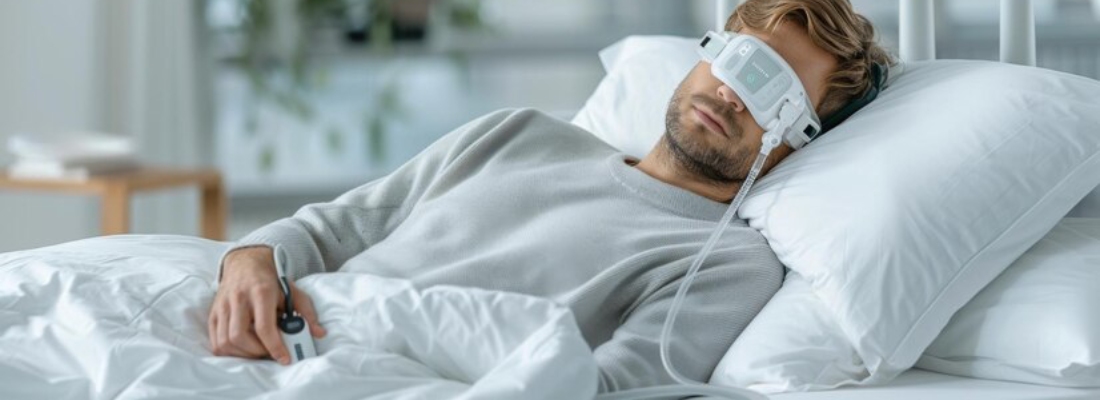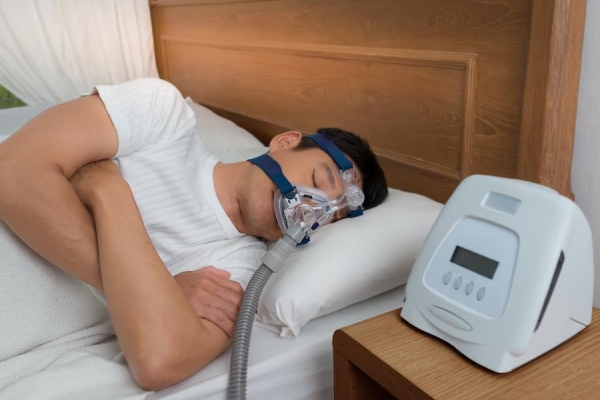
Sleep is a cornerstone of good health, yet millions of people struggle with sleep disorders that go undiagnosed or untreated for years. In fact, it is estimated that nearly 22 million Americans suffer from sleep apnea with around 80% of moderate to severe cases. However, chronic issues contribute to a wide range of health problems from fatigue, heart disease or even strokes. And often, these issues go unnoticed or are mistaken for other health issues.
Furthermore, you might also be unable to note the changes your body goes through when you are suffering from undiagnosed sleep disorders. Consequently, it impacts everything from mood, memory to heart health. Therefore, to track your sleep cycles better you need to understand your sleep study results. Moreover, in this blog we will talk about what is considered normal and how to take action when necessary.
How to Read Sleep Study Results
Upon receiving your sleep study results, it’s important to focus on several critical metrics that provide insight into your sleep patterns and potential disorders. In addition, here’s how to interpret the most common components:
Apnea-Hypopnea Index (AHI)
The AHI measures the average number of apneas (complete cessation of airflow) and hypopneas (partial reduction in airflow) per hour of sleep.
Oxygen Desaturation Index (ODI)
The ODI indicates how often blood oxygen level drops by 4% or more during sleep. An ODI of fewer than five desaturations per hour is considered normal. However, higher values may suggest significant breathing issues, potentially leading to hypoxemia and increased cardiovascular risks.
Sleep Efficiency
Sleep efficiency is the percentage of time spent asleep relative to the total time spent in bed. However, a sleep efficiency of 80% or higher is generally normal, with young, healthy adults often achieving efficiencies above 90%.
Sleep Latency
This refers to the amount of time it takes to fall asleep after lying down. Due to this, longer sleep latencies indicate issues such as insomnia or other sleep disorders.
Sleep Stages
A comprehensive sleep study monitors various stages of sleep, including:
- NREM (Non-Rapid Eye Movement): Divided into stages N1, N2, and N3, with N3 being deep sleep.
- REM (Rapid Eye Movement): Associated with vivid dreaming and cognitive functions.
- Disruptions in these stages point to specific sleep disorders.
Limb Movement Events
Frequent leg movements during sleep are indicative of conditions like periodic limb movement disorder (PLMD), which as a result disrupts sleep quality.
Key Components of Your Sleep Study Results
Beyond the primary metrics, several other components provide valuable insights into your sleep health:
Heart Rate and Respiratory Effort: Monitoring this helps identify irregularities in cardiac and respiratory functions during sleep.
Brain Waves and Eye Movements: These assess sleep stages and detect disorders like narcolepsy or REM sleep behavior disorder.
Body Position: Understanding how your body position affects sleep can be crucial, especially for conditions like positional obstructive sleep apnea.
Concerned About Your Sleep Problems?
Learn how our in-home sleep study can help diagnose sleep disorders in the comfort of your home.
Interpreting Your Results
Once you get normal sleep study results it’s essential to discuss them with a healthcare provider specializing in sleep medicine. However, they help you understand the implications of your findings and recommend appropriate treatments or lifestyle changes. For instance, if your AHI indicates moderate to severe sleep apnea, treatment options may include:
- Continuous Positive Airway Pressure (CPAP): A device that keeps your airways open during sleep.
- Lifestyle Modifications: Such as weight loss, avoiding alcohol before bedtime, and sleeping on your side.
- Surgical Interventions: In cases where anatomical issues contribute to sleep apnea.
Additional Components to Look For
Heart Rate and Respiratory Effort
These measurements reveal signs of cardiac arrhythmias, central sleep apnea, or other systemic issues. Moreover, these abnormal patterns may also require further cardiovascular evaluation.
Brain Waves and Eye Movements
Electroencephalogram (EEG) and electrooculogram (EOG) data help identify REM sleep behavior disorder. Furthermore, narcolepsy, or seizures that also occur during sleep.
Body Position
Some people experience more breathing disturbances when sleeping on their back. This is known as positional sleep apnea. However, tracking how your body position affects sleep helps guide treatment.
What to Do with Your Results
Reading your sleep study results is only the first step. After all, the next, and most crucial step is to consult a sleep specialist who will explain your report in detail and suggest the next steps. Moreover, if you’re going through sleep apnea, treatment options may include:
Continuous Positive Airway Pressure (CPAP)
A CPAP machine delivers a steady stream of air through a mask to keep your airways open. Moreover, it is also the most common and effective treatment for moderate to severe sleep apnea.
Lifestyle Changes
Simple adjustments like weight loss, quitting smoking, reducing alcohol intake, managing allergies, and hence sleeping on your side significantly improves symptoms.
Oral Appliances
Custom-fit dental devices reposition the jaw to keep airways open, typically containing mild to moderate cases.
Surgery
For those who don’t respond to other treatments, surgical options such as uvulopalatopharyngoplasty (UPPP), nasal surgeries, or even implanted nerve stimulators might be something to consider.
When Should I Know the Results of a Sleep Study?
The timeline for receiving your sleep study results vary based on the type of study and the clinic or hospital where it was performed. However, here’s a general breakdown:
In-Lab Sleep Study (Polysomnography)
A sleep study result typically takes 1 to 2 weeks to receive your sleep test results. After the test, the data is reviewed by a sleep technologist and interpreted by a sleep specialist.
Home Sleep Apnea Test (HSAT)
For home-based sleep studies, the process is usually quicker, sleep study results are often available within a few days to a week, depending on the provider.
Follow-Up Appointment
Once your sleep test results are ready, your sleep specialist will schedule a follow-up appointment (in-person or virtual) to go over the findings with you. Moreover, they end up explaining what they mean and discuss potential treatment options if necessary.
At Home Sleep Apnea Testing
Having your sleep study results explained by a qualified professional is crucial, especially if your study reveals moderate to severe issues that need prompt attention. Consequently, sleep study results are critical to reclaim your health and quality of life. However, a sleep study offers valuable insights into what’s happening behind the scenes each night.
Furthermore, by analyzing key indicators like the Apnea-Hypopnea Index (AHI), Oxygen Desaturation Index (ODI), sleep stages, and efficiency. In addition, it’s worth noting that at-home sleep apnea tests (HSATs) are now more accessible than ever. Therefore, a qualified sleep specialist will help interpret your report, explain what your numbers mean, and guide you through the following steps.
Ready to Take Control of Your Sleep?
Book your appointment today and start your journey toward better sleep health.

